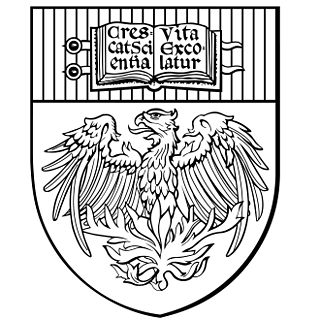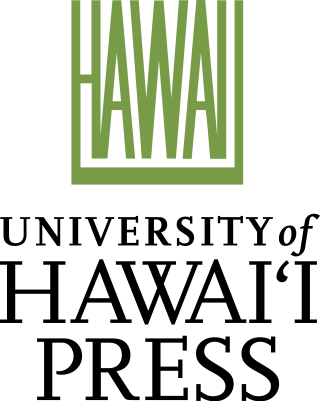Related Research Articles

In academic publishing, a preprint is a version of a scholarly or scientific paper that precedes formal peer review and publication in a peer-reviewed scholarly or scientific journal. The preprint may be available, often as a non-typeset version available free, before or after a paper is published in a journal.

Academic publishing is the subfield of publishing which distributes academic research and scholarship. Most academic work is published in academic journal articles, books or theses. The part of academic written output that is not formally published but merely printed up or posted on the Internet is often called "grey literature". Most scientific and scholarly journals, and many academic and scholarly books, though not all, are based on some form of peer review or editorial refereeing to qualify texts for publication. Peer review quality and selectivity standards vary greatly from journal to journal, publisher to publisher, and field to field.

An academic journal or scholarly journal is a periodical publication in which scholarship relating to a particular academic discipline is published. They serve as permanent and transparent forums for the presentation, scrutiny, and discussion of research. They nearly universally require peer review for research articles or other scrutiny from contemporaries competent and established in their respective fields.

Open access (OA) is a set of principles and a range of practices through which research outputs are distributed online, free of access charges or other barriers. With open access strictly defined, or libre open access, barriers to copying or reuse are also reduced or removed by applying an open license for copyright.

Taylor & Francis Group is an international company originating in England that publishes books and academic journals. Its parts include Taylor & Francis, CRC Press, Routledge, F1000 Research and Dovepress. It is a division of Informa plc, a United Kingdom-based publisher and conference company.
A monograph is a specialist written work or exhibition on one subject or one aspect of a usually scholarly subject, often by a single author or artist. Although a monograph can be created by two or more individuals, its text remains a coherent whole and it keeps being an in-depth academic work that presents original research, analysis, and arguments. As a focused, in-depth and specialised written work in which one or more authors develop a uniform and continuous argument or analysis over the course of the book, a monograph is essentially different from an edited collection of articles. In an edited collection, a number of original and separate scholarly contributions by different authors are edited and compiled into one book by one or more academic editors.

The University of Chicago Press is the university press of the University of Chicago, a private research university in Chicago, Illinois. It is the largest and one of the oldest university presses in the United States. It publishes a wide range of academic titles, including The Chicago Manual of Style, numerous academic journals, and advanced monographs in the academic fields. The press is located just south of the Midway Plaisance on the University of Chicago campus.

Sage Publishing, formerly SAGE Publications, is an American independent academic publishing company, founded in 1965 in New York City by Sara Miller McCune and now based in the Newbury Park neighborhood of Thousand Oaks, California.
The University of Michigan Press is a new university press (NUP) that is a part of Michigan Publishing at the University of Michigan Library. It publishes 170 new titles each year in the humanities and social sciences. Titles from the press have earned numerous awards, including Lambda Literary Awards, the PEN/Faulkner Award, the Joe A. Callaway Award, and the Nautilus Book Award. The press has published works by authors who have been awarded the Pulitzer Prize, the National Humanities Medal and the Nobel Prize in Economics.

The University of Hawaiʻi Press is a university press that is part of the University of Hawaiʻi.
Scholarly communication involves the creation, publication, dissemination and discovery of academic research, primarily in peer-reviewed journals and books. It is “the system through which research and other scholarly writings are created, evaluated for quality, disseminated to the scholarly community, and preserved for future use." This primarily involves the publication of peer-reviewed academic journals, books and conference papers.

A university press is an academic publishing house specializing in monographs and scholarly journals. They are often an integral component of a large research university. They publish work that has been reviewed by scholars in the field. They produce mainly academic works but also often have trade books for a lay audience. These trade books also get peer reviewed. Many but not all university presses are nonprofit organizations, including the 160 members of the Association of University Presses.
UWA Publishing, formerly known as the Text Books Board and then University of Western Australia Press, is a Western Australian publisher established in 1935 by the University of Western Australia. It produces a range of non-fiction and fiction titles.
Berg Publishers was an academic publishing company based in Oxford, Oxfordshire, England and Providence, Rhode Island, United States. It was founded in the United Kingdom in 1983 by Marion Berghahn. Berg published monographs, textbooks, reference works, and academic journals. It focused on fashion, design, anthropology, history, and cultural studies. Operations in providence began shortly after Berghahn's husband, historian Volker Berghahn, accepted a chair at Brown University in 1988.
Amsterdam University Press (AUP) is a university press that was founded in 1992 by the University of Amsterdam in the Netherlands. It is based on the university press model and operates on a not-for-profit basis. AUP publishes scholarly and trade titles in both Dutch and English, predominantly in the humanities and social sciences and has a publishing list of over 1400 titles. It also publishes multiple scholarly journals according to the open access publishing model. From 2000 until 2013, the AUP published the journal Academische Boekengids with book reviews written by editors from multiple Dutch universities.

Brill Academic Publishers, also known as E. J. Brill, Koninklijke Brill, Brill, is a Dutch international academic publisher of books and journals.

Aboriginal History is an annual peer-reviewed academic journal published as an open access journal by Aboriginal History Inc. It was established in 1977 and covers interdisciplinary historical studies in the field of the interactions between Australian Aboriginal and Torres Strait Islander peoples and non-Indigenous peoples. The Journal has been described as "... a flagship of the field of Australian Aboriginal history."
Academic journal publishing reform is the advocacy for changes in the way academic journals are created and distributed in the age of the Internet and the advent of electronic publishing. Since the rise of the Internet, people have organized campaigns to change the relationships among and between academic authors, their traditional distributors and their readership. Most of the discussion has centered on taking advantage of benefits offered by the Internet's capacity for widespread distribution of reading material.

Predatory publishing, also write-only publishing or deceptive publishing, is an exploitative academic publishing business model that involves charging publication fees to authors while only superficially checking articles for quality and legitimacy, and without providing editorial and publishing services that legitimate academic journals provide, whether open access or not. The rejection rate of predatory journals is low, but seldom zero. The phenomenon of "open access predatory publishers" was first noticed by Jeffrey Beall, when he described "publishers that are ready to publish any article for payment". However, criticisms about the label "predatory" have been raised. A lengthy review of the controversy started by Beall appears in The Journal of Academic Librarianship.
Library publishing, also known as campus-based publishing, is the practice of an academic library providing publishing services.
References
- ↑ Adema, Janneke (2017). "The Surge in New University Presses and Academic- Led Publishing: An Overview of a Changing Publishing Ecology in the UK". LIBER Quarterly . 27 (1): 97–126. doi: 10.18352/lq.10210 . Retrieved 4 March 2023.
- ↑ "Description of the Peer Review process per partner: ANU Press". OAPEN Foundation. Archived from the original on 7 June 2019. Retrieved 21 October 2017.
- 1 2 3 Kanellopoulos, Lorena (3 May 2007). "The ANU's Electronic Publisher: ANU E Press". ANU Open Research Library. ANU. Retrieved 21 October 2017.
- ↑ "ANU Press". Australian Prime Ministers Centre. the Museum of Australian Democracy at Old Parliament House. Archived from the original on 21 October 2017. Retrieved 21 October 2017.
- ↑ "ANU Press: Publisher Description". JSTOR . ITHAKA. Retrieved 21 October 2017.
- ↑ Missingham, Roxanne; Kanellopoulos, Lorena (2014). "University presses in libraries: potential for successful marriage". OCLC Systems & Services: International Digital Library Perspectives. 30 (3): 158–166. doi:10.1108/OCLC-01-2014-0001. S2CID 26568300.
- ↑ "Journals". ANU Press. Retrieved 13 April 2020.